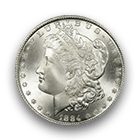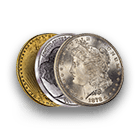"After the glimpse I had had of the Martians emerging from the cylinder in which they had come to the earth from their planet, a kind of fascination paralyzed my actions. I remained standing knee-deep in the heather, staring at the mound that hid them. I was a battleground of fear and curiosity." So H.G. Wells’ War of the Worlds describes the arrival of alien invaders. This passage is inscribed on a cylindrical sculpture on a street in Woking, a town outside London in England.
Wells arrived in Woking in May 1895. Today, it is a bustling place of more than 100,000 people, but in Wells’ day, the population was around one-tenth of that. Wells wrote, “There I planned and wrote the War of the Worlds … I wheeled about the district marking down suitable places and people for destruction by my Martians.”
As you walk around Woking, there are markers and monuments to many scenes from War of the Worlds. There is, however, at least one notable location that doesn’t appear in the novel. It features a large sign with only a graphic image of a giant panda on it. This is the office of the World Wildlife Fund. The Fund, started in 1961, has played a largely unsung role in the growth of Chinese numismatics.
The World Wildlife Fund famously uses a giant panda as its logo subject. This symbolizes the organization’s founding purpose to promote the conservation of endangered and threatened animals. How a panda – and one particular panda – came to fill this role is woven into a story of Chinese numismatics.
When the French scientist-priest Père David revealed the giant panda to the rest of the world in 1869, what he delivered to Paris was a pelt – the fur of a dead animal. For decades thereafter, Western institutions followed suit and sought to acquire the skins of dead pandas to stuff and place in museums.
By the 1930s, the public was outraged by this practice. From that time forward, only living animals to be lovingly tended in zoos were acceptable and this started an international trade in live pandas. The bears, though, proved to be uncooperative participants in this highly lucrative commerce. They were difficult to keep alive in captivity, and the population of pandas in the wild, never large and ignored by people for eons, had decreased alarmingly.
In 1938, on the eve of World War II, five pandas arrived at the London Zoo. Three were purchased, and the other two may have been sent there to escape fighting on the continent. One of the refugee bears was quite old, and the other was sent to the U.S.A. Records show that two pandas were moved out of London to the Whipsnade Zoo for their safety at the start of the war. These joined the third already there.
The London Zoo closed when war was declared but reopened two weeks later and managed to stay open throughout most of the conflict. Due to wartime shortages, finding the proper foods for each animal was a challenge, although the pandas in Whipsnade did not want for bamboo. In an echo of the Silk Road, camels and llamas packed supplies from point to point across the London Zoo grounds to save fuel. To plug financial gaps, a public campaign to “adopt” animals was launched. It proved to be so popular that it continues to this day.
The London Zoo was hit only once during the Blitz. This destroyed some buildings and exhibits, but amazingly, no animals were killed.
In 1946, a new panda named Lien-Ho arrived in London. It had been trapped in Baishuijiang, China. Lien-Ho was clearly unhappy about his loss of freedom, and his dark moods unsettled the zoo staff. When he died in 1950, the London Zoo announced, “We do not plan to replace Lien-Ho. Pandas, although a big box office draw, are perhaps best left in their native forests.” This policy accorded with one of the earliest acts by the People’s Republic of China: a 1949 ban on trapping and trading pandas.
But fate had a trick up its sleeve. In 1954, the last captive panda outside of China died in Chicago. By coincidence, around this time China itself turned its attention to the animals it would one day label “national treasures.” Three were installed in the zoo in Beijing. Three years later, a very young female panda was found in Szechuan Province. She was moved to the Peking Zoo and named Chi-Chi. An outstanding staff member selflessly devoted herself to the new arrival’s care, and the little panda thrived.
Coincidentally, for some years, an Austrian wildlife dealer named Heini Demmer had tried to convince China to trade with him. Demmer sought a panda in exchange for some African big game, like giraffes and rhinos. In order to restock the Peking Zoo, the Chinese government finally agreed to allow him to visit China and choose a panda. He took Chi-Chi. Demmer then made a deal with an American zoo to sell Chi-Chi to it for the then-enormous sum of $25,000.
There was one catch, however: a U.S. government total embargo on trade with China. The ban meant that Chi-Chi could not enter the U.S. Despite all pleas, no exceptions for the panda were granted. Forced by finance and circumstances, Demmer began renting little Chi-Chi out by the week to European zoos. She attracted crowds everywhere. When she reached London, the public reception was cool at first; people expected a bad-tempered creature like Lien-Ho. Chi-Chi, by contrast, was mischievous. She escaped her handlers — twice. One time, she ran into a crowd of tourists and nipped a woman’s leg. A hut built for her collapsed under her weight. Chi-Chi became news, and the crowds swelled.
In the end, common sense dictated the zoo’s decision: Chi-Chi couldn’t live in America, and London was the only zoological institution in Europe with experience in caring for pandas. Moreover, the zoo had clean hands in her removal from China. The cost issue was resolved when a TV station donated most of the money. Chi-Chi became a British pop star, which is just what she was in 1961 when the World Wildlife Fund was formed. Its founders understood that they needed a universally recognizable symbol as their Logo. The design needed to instantly evoke threatened natural wonders and attract sympathy. A panda would be perfect.
With Chi-Chi as inspiration, a British artist/environmentalist created the first sketches. These were further developed by one of the organization’s founders, Peter Scott, who declared, “We wanted an animal that is beautiful, is endangered, and one loved by people around the world. We also wanted an animal that symbolized all that was disappearing in the natural world.”
Since then, numerous countries have minted coins and medals that feature the World Wildlife Fund’s panda logo, like the German medal shown, but there are three issues that are of particular interest to Chinese coin aficionados. The first of these had profound effects on China’s numismatic path.
The year 1986 marked the 25th anniversary year of the WWF. A four-day-long celebration was held in Italy at the medieval Basilica of St. Francis in Assisi. Great Britain’s Prince Charles presided over the event. A newspaper reported, “‘The anniversary celebration […] included a variety of events focusing on the search for new ways to spread the conservationist message. It was Prince Philip who first suggested that the Wildlife Fund draw together leaders of Buddhism, Judaism, Hinduism, Islam, and Christianity to celebrate the respect for nature all the faiths have in common,’ Wildlife Fund officials said.”
As part of this 25th celebration, 25 countries released silver WWF anniversary coins. The coins are all collectible in their own right, and the PCGS Set Registry includes the “WORLD WILDLIFE FUND 25TH ANNIVERSARY COIN COLLECTION, PROOF (1986-1989)” set. All 25 of the coins have pandas on them because they include the logo, but only one country chose to portray a giant panda as its subject: China. The others portray species native to their lands, like the musk deer of Nepal.
China contributed a 27-gram, .900-fine 5 yuan silver coin (the same specifications as the old international trade dollars, by the way; this connection to a more than century-old standard is sometimes lost on collectors of only modern coinage). The WWF coin was struck in two versions at the Shanghai Mint: proof and uncirculated. There were 25,000 of the proofs made and 20,000 in uncirculated.
Many proofs were distributed inside little white folders that promote the work of the Fund in three languages: English, French, and German (no Chinese). The uncirculated coins appear on the market a little less often than one might expect given the almost equal mintages.
The design choice was a lengthy process. Both the Royal Mint and the China Mint submitted proposals to each other. The Chinese eventually agreed to use the British design, although it is distinctly out of step with Chinese tradition that emphasizes line over shading. In a sense, that was the point. The British had a method of engraving shading on dies that the Chinese were unfamiliar with. The Chinese designers wanted to learn more about this approach that they called “3D.”
One participant in the discussions recalled, “China only knew the concave-convex carving (method) of making dies in the 1980s. We didn’t expect that England could display the black-and-white colors of pandas so well with their 3-D engraving technique. We spent a lot of time adapting and updating our craftsmanship and finally achieved it on the 1995 Panda coins.”
The 1986 WWF coins had another important effect on Panda coin development: it ended the popular series of proof 27-gram silver panda coins. These were minted from 1983 until 1985. When the sponsor and chief distributor of the series, Martin Weiss of Panda America, heard about the plans for a 1986 WWF coin, he didn’t want to compete with that. He canceled his plans for a 1986 proof silver Panda. The only Chinese crown-size (around 38-40 millimeter diameter) silver Panda coin minted for 1986 is the World Wildlife Fund issue. When China struck a silver proof Panda in 1987, it weighed one troy ounce.
Twenty-five years later, the World Wildlife Fund numismatically returned to China for its 50th anniversary. Two coins and one medal were officially minted:
- A 22-millimeter, quarter-ounce 100 yuan gold coin with a reverse designed around the WWF logo and the number 50. Mintage of 10,000.
- A 40-millimeter, one-ounce 10 yuan silver coin with two Tibetan antelopes. Mintage of 10,000.
- A 40-millimeter, one-ounce silver medal with a panda as the reverse’s subject. Mintage of 1,000. Like the 1986 coins, the medal reveals a foreign influence in its design.
The 1,000 WWF medals were distributed as part of a three-piece set that contains the 2011 10 yuan Tibetan antelope coin and the 2011 10 yuan silver panda coin. As there were 30,000 Tibetan antelope coins minted and three million 10 yuan silver panda coins, the silver panda medal is the key to this trio. It represents a renewal of a tradition of collaboration between the two countries and numismatic cultures. The medal is not easy to find, and many panda coin collectors may be unaware of it.
The World Wildlife Fund may have left few noticeable pawprints in Chinese coin culture, but there is more to the story than meets the eye and it’s worthy of telling.
Happy collecting!












 Copper & Nickel
Copper & Nickel
 Silver Coins
Silver Coins
 Gold Coins
Gold Coins
 Commemoratives
Commemoratives
 Others
Others
 Bullion
Bullion
 World
World
 Coin Market
Coin Market
 Auctions
Auctions
 Coin Collecting
Coin Collecting
 PCGS News
PCGS News